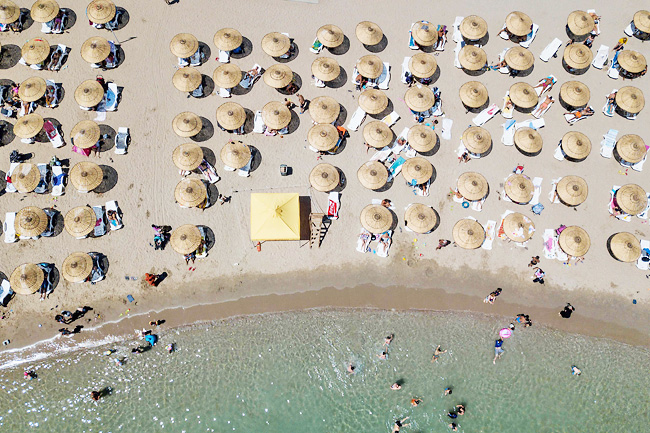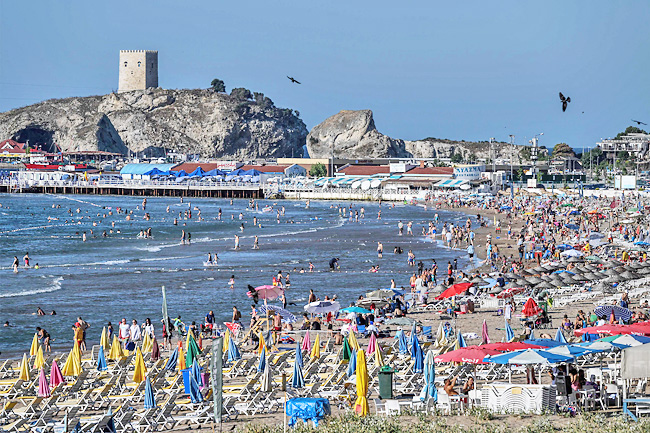ISTANBUL (AFP) – Every morning, his skin bronzed by the sun, pensioner Metin Cakmakci rushes to grab a deckchair under a parasol on his local beach on the Asian side of Istanbul.
“A sea like this for a gigantic city such as Istanbul – it’s not bad,” the 74-year-old smiles, pointing to the crystal-clear water facing the Princes’ Islands on the Sea of Marmara.
Istanbul, a bustling megalopolis of 16 million people between two continents and two seas, does not immediately bring to mind images of a beach resort.
But just like the locals of New York, Beirut and a handful of other global cities, Istanbulites can swim all summer long and return home on the metro with sand trapped under their sandals and salt layering their skin.
“In the old days, you could access the water anywhere,” Cakmakci reminisces. “Now, of course, you have buildings everywhere. The coastline has changed. We all now live on top of each other, in a way.”
Istanbul officials have added a hundred extra sun loungers to Cakmakci’s beach, creating room for 300 people under 170 parasols just 25 minutes’ walk from the pensioner’s home.
This year, attendance has shot up, said Sezgin Kocak, who oversees maintenance at the beach.


A large part of the spike stems from an economic crisis that has seen consumer prices soar by 80 per cent in one year. “A lot of people can’t afford to get out of Istanbul anymore,” explained Canan Civan, a bather in her sixties. “But even if I had the money, I wouldn’t go anywhere else. Instead of spending 10 days on holiday, I’d rather come here every day for three months.”
Istanbul has 85 accessible beaches or bathing spots between the Black Sea in the north, the Sea of Marmara in the south and the Bosphorus Strait in between.
Public or private, some attract a more traditional clientele who cover themselves up in veils, while others come out in less.
Like Turkish society itself, the two often share the same space.
At other times, an invisible demarcation line appears. One such line is in the Sile neighbourhood, where the Black Sea meets the northern edge of the Bosphorus Strait – the stretch of water dividing Turkey between its European and its Asian halves.
On the European side, Eren Bizmi is trying to start up a volleyball game with some friends from work.
“Istanbulites know you can find a beach 35, 40 minutes from the centre,” the 32-year-old real estate agent said.
“And I can work at the same time,” added Sema Basaran, the only woman in the volleyball game. “If a client calls, I can go and show them a house and come back,” the 22-year-old grins.
No-one mentions the two mines that washed up in this area earlier this year – a haunting reminder of the war pitting Ukraine against its Russian invaders on the far side of the Black Sea.






